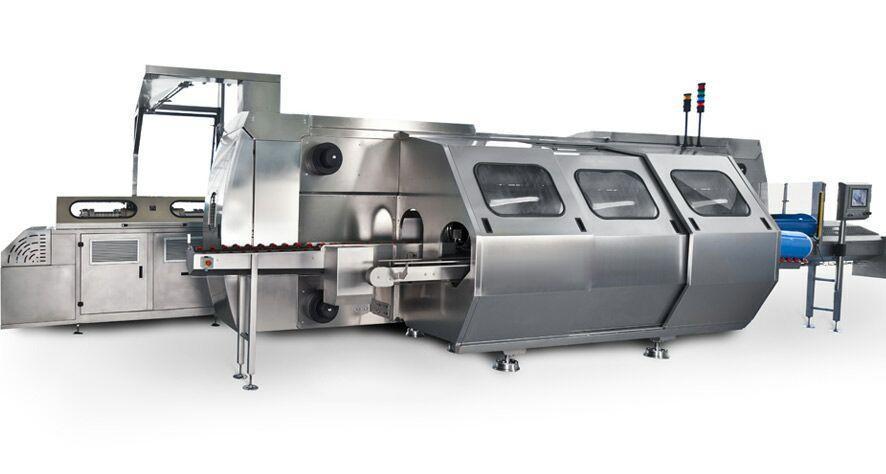High-Pressure Sterilization of Jam: The Perfect Combination of Preservation and Deliciousness
2025-11-21 13:14:57
In modern agriculture and the food industry, jam, as a popular food, is widely used not only for breakfast, desserts, and baking, but also for its rich flavor and diverse textures. However, ensuring both flavor and safety, as well as maintaining a long shelf life, during the production and storage of jam is a topic of great concern. The emergence of ultra-high pressure sterilization (UHP) technology provides an effective solution for jam production and preservation.
I. What is Ultra-High Pressure Sterilization?
Ultra-high pressure sterilization (UHP) is a method of sterilizing food using high temperature and high pressure. This method typically operates at pressures of 7000 to 9000 kPa, effectively killing bacteria, yeast, and mold at relatively low temperatures, thus significantly extending the shelf life of food. This technology not only preserves the nutritional components of food but also maintains its original taste and color, avoiding the damage to food flavor caused by traditional high-temperature sterilization methods.
II. Principles and Process of Ultra-High Pressure Sterilization
The basic principle of ultra-high pressure sterilization is to alter the internal pressure environment of food, affecting the cell structure and physiological functions of microorganisms, thus rendering them unable to reproduce. In practice, the jam is first placed in a specialized container, then pressurized in an ultra-high pressure device and maintained for a specific time. During this process, microorganisms are effectively killed due to the pressure changes, without significantly affecting the jam's taste and nutritional value.
The entire ultra-high pressure sterilization process includes the following steps:
1. Preparation Stage: Select fresh fruit, wash and process it into jam base.
2. Pressurization Stage: Place the processed jam into the ultra-high pressure device and apply high pressure, typically maintaining it for several minutes to over ten minutes.
3. Depressurization Stage: After pressurization sterilization, gradually reduce the pressure to ensure the jam's flavor and nutritional components are fully preserved.
4. Packaging Stage: The sterilized jam is packaged in a sterile environment to prevent secondary contamination.
III. The Impact of Ultra-High Pressure Sterilization on Jam Quality
1. Preservation of Flavor and Nutrients
Compared to traditional heat sterilization methods, ultra-high pressure sterilization is performed at lower temperatures, thus having minimal impact on the taste, color, and nutritional components of the jam. Numerous studies have shown that jam treated with ultra-high pressure retains significantly higher levels of vitamins and flavor compounds than jam sterilized at high temperatures. Furthermore, the natural sugars and acidity of the jam are also preserved, resulting in a richer and more natural flavor.
2. Extended Shelf Life
Another significant advantage of ultra-high pressure sterilization is its ability to effectively extend the shelf life of jam. Traditional jams generally have a short shelf life and must be consumed within a certain timeframe, while ultra-high pressure processed jams can have a shelf life extended to one year or even longer. This allows consumers to purchase and store jam with greater confidence, reducing waste.
3. No Preservatives Used
Due to the superiority of ultra-high pressure sterilization technology, an increasing number of jam producers are choosing to eliminate the use of artificial preservatives. This not only means that the jam ingredients are healthier and safer, meeting today's consumers' pursuit of natural foods, but also enhances brand image and market competitiveness.
IV. Market Prospects for Ultra-High Pressure Sterilization
With the increasing pursuit of healthy eating, ultra-high pressure sterilization technology has broad application prospects in jam production. Consumers' focus on food safety and quality has driven the development of this technology, and more and more manufacturers are investing in ultra-high pressure equipment to meet market demand for high-quality jam. Furthermore, with the continuous development and innovation of this technology, we may see more new jam products based on ultra-high pressure sterilization technology emerge in the future.
V. Future Development of Ultra-High Pressure Sterilization
Although ultra-high pressure sterilization technology has demonstrated significant advantages in jam production, certain challenges remain. For example, the equipment investment cost is high, and the operational technology requirements are also high. Therefore, many small jam manufacturers may face high barriers to entry.
In the future, with continuous technological advancements and increasing market demand, we have reason to believe that ultra-high pressure sterilization technology will find applications in a wider range of food processing fields. At the same time, strengthening the promotion and popularization of related technologies will help more manufacturers improve product quality and achieve sustainable development.
In conclusion, ultra-high pressure sterilization technology for jams is not only an important development direction in the food processing industry today, but also a crucial means to improve jam quality. Through a deeper understanding of this technology, consumers can enjoy natural flavors while also receiving greater safety assurance. With the increasing demands for higher food safety standards, jams using advanced technology will undoubtedly occupy a larger market share. In the future, let us look forward to the arrival of even more delicious and healthy jam products.